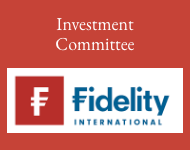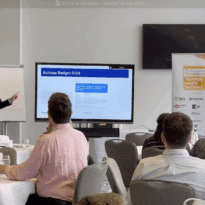Paul Ilott and the Scopic Research team conduct performance reviews on multi asset funds by breaking down the year under review into separate risk-on and risk-off periods. The performance reviews then discuss how the multi-asset fund performed during each of these periods and suggests whether the strength or weakness in its returns during each could have been anticipated given the portfolio team’s approach, the instruments it uses, and the team’s preferences.
In other words, has the multi asset fund’s performance been consistent with what we might have expected?
Here, the team review the BNY Mellon FutureLegacy 5 Fund. They say:
This is one of five global, thematically driven portfolios of equities and bonds where the majority of underlying companies either exhibit sustainable characteristics or have concrete plans to transition towards having more sustainable practices in future.
All the portfolios in this suite have received regulatory approval as ‘Non-Labelled Disclosed Funds’ within the FCA’s sustainability disclosure requirements (SDR).
The aim is for each portfolio to deliver good risk adjusted returns – above that achieved by its strategic asset allocation (SAA) – whilst also keeping its expected volatility within a volatility corridor suggested by the Dynamic Planner optimised model. For this portfolio, volatility risk is managed to Dynamic Planner risk level 5.
Team: Newton Investment Management – Bhavin Shah and Martin Chambers.
AUM: £56.76 million (as at 31-Jul-25)
Launch: 07-Feb-23.
Our review covers 10-Jul-24 to 16-May-25.
The portfolio began with the team believing that inflation was likely to remain a more persistent problem that could eventually increase the discount factor investors apply to expectations for technology companies’ earnings. This was making it wary of their valuations. It was also concerned about the increasing concentration risk at the top of global equity market indices. Believing that having too strong a growth style tilt could hurt the portfolio’s returns if the market was to recognise these risks, it began to focus more on companies with attractive income yields and quality-style characteristics.
As a result, throughout our review period the team continued to pare back exposure to more expensive technology companies – recycling the proceeds into more thematic names. This had the impact of lowering the interest rate sensitivity of the equity allocation within the strategic asset allocation (technology companies tend to be higher duration plays that entail ‘higher sensitivity to interest rates), which then gave the team more scope to adjust the interest rate sensitivity within bond holdings. As it happened, this meant that the portfolio was well positioned to cope with our first risk-off period.
The portfolio ended our review period having outperformed its peers in absolute terms by a good margin but with lower volatility – resulting in superior risk adjusted overall.
10-Jul-24 – 05-Aug-24 Risk off
Weak job numbers, concerns about the possibility of recession in the US, coupled with a dramatic increase in the yen following a surprise rise in Japanese interest rates and an unwinding of a well-used carry trade that had enabled hedge funds to borrow cheaply in yen to invest in other assets, results in tumbling equity markets worldwide – particularly amongst Japanese companies and US technology businesses.
A lower exposure to technology companies and a now higher interest rate sensitivity within bonds – particularly sovereign bonds – both played their part in helping the portfolio to record a far shallower drawdown than its peers.
The sustainability characteristics of the holding in CME Group is hard to calibrate. Here, it was held primarily as a hedge against market volatility, which duly paid off – and not for the last time – with the company benefitting from increased trading activity given the turbulent market backdrop.
In the meantime, asset allocation – which reflects security selection – remained broadly unchanged, besides that is, from buying GE Vernova – a manufacturer of industrial gas and wind turbines and software for electricity grids using some of the proceeds from the sale of tech names.
05-Aug-24 – 23-Jan-25 Risk on
Revised US employment data. US inflation falls leading to larger than expected rate cut / surprise China stimulus package excites markets temporarily / Trump elected for second term leads to expectations of regulatory change, tax cuts, and tariffs on foreign imports.
We note continued evidence of the team’s policy of using equity index futures to continually adjust the portfolio’s beta (sensitivity to broader equity markets) throughout different market phases. This meant that despite its now lower exposure to technology companies than previously and its more moderate tilt towards the growth style during a period when these factors both drove market returns higher, the portfolio still generated excellent returns during this phase – both in relative and absolute terms and with lower volatility than its peers.
Bond holdings didn’t participate as much as they might have done when US interest rates were cut early into the period – with the team having initially been cautious about how steep any rate cuts might be – it lowered their duration (sensitivity to interest rates). However, the impact of this was more than offset by more interest rate sensitive equity holdings within industrials (GE Vernova) and utilities, which gained. The latter was also boosted by tightening conditions in the US power market as large technology companies accelerated their rollouts of data centres.
Asset allocation positioning then remained broadly flat around the time of the China stimulus package with the team content to maintain the portfolio’s beta (sensitivity to broader equity markets) at around 0.8 given its still cautious stance.
However, this all changed following the US election, with the portfolio benefitting from the team adding long equity futures in anticipation of rising equity markets. Markets did indeed rally strongly and these positions were subsequently closed out, capturing gains before the year end. Shorting sovereign bond futures also helped when bond yields began to rise.
23-Jan-25 – 08-Apr-25 Risk off
US technology stocks are initially rattled by news of the success of China’s DeepSeek in being able to deliver advanced AI solutions at a lower cost than its competitors. Markets then take fright as Trump announces the imposition of tariffs on foreign goods leading to concerns about the implications for global trade on the health of the global economy.
The portfolio’s drawdown proved marginally deeper than its peers during this phase.
Like many others – the team felt it had no real visibility of the immediate outlook and it left the portfolio’s positioning largely unchanged. A significant underweight to the largest technology companies (including underweight positions in Alphabet, Apple and Nvidia) helped though, as did the portfolio’s natural avoidance of companies involved in fossil fuels, which fell heavily on fears of a global slowdown. Once again, CME Group – one of the portfolio’s most significant overweight holdings – benefitted from the market’s volatility.
08-Apr-25 – 16-May-25 Risk on (although the markets continued to rally after this.)
Stock markets rebound strongly after some of the tariffs imposed upon foreign goods entering the US are either lowered or paused. Stronger than expected earnings reports continue to support stocks – particularly US technology businesses.
The portfolio began what subsequently turned out to be a risk-on phase that stretched far beyond the end of our review period, reasonably well – but still marginally behind its peers.
An overweight to Europe, and in particular, a holding in SPIE, sparked investors’ optimism given the German government’s announcement of plans to increase its infrastructure spending. Shares in GE Vernova also reacted positively on the release of first-quarter results that beat the market’s expectations.
Qualitative analysis by Scopic Research www.scopicresearch.co.uk
The opinions expressed are those formed by Scopic Research and don’t represent investment advice or a recommendation to invest in a particular multi-asset portfolio. Scopic Research doesn’t give investment advice. Past performance isn’t a guarantee of the returns that might be achieved in the future and investment returns can be negative as well as positive.
Main image: christian-wiediger-F8IAN0lyFJU-unsplash






























